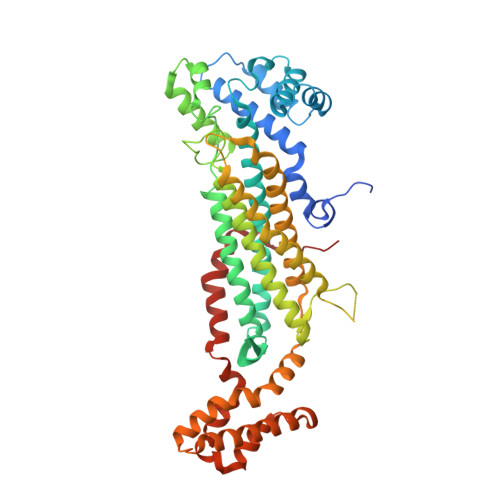Structural and kinetic analysis of Schistosoma mansoni Adenylosuccinate Lyase (SmADSL).
Romanello, L., Serrao, V.H., Torini, J.R., Bird, L.E., Nettleship, J.E., Rada, H., Reddivari, Y., Owens, R.J., DeMarco, R., Brandao-Neto, J., Pereira, H.D.(2017) Mol Biochem Parasitol 214: 27-35
- PubMed: 28347672
- DOI: https://doi.org/10.1016/j.molbiopara.2017.03.006
- Primary Citation of Related Structures:
5EYT, 5EYV - PubMed Abstract:
Schistosoma mansoni is the parasite responsible for schistosomiasis, a disease that affects about 218 million people worldwide. Currently, both direct treatment and disease control initiatives rely on chemotherapy using a single drug, praziquantel. Concerns over the possibility of resistance developing to praziquantel, have stimulated efforts to develop new drugs for the treatment of schistosomiasis. Schistosomes do not have the de novo purine biosynthetic pathway, and instead depend entirely on the purine salvage pathway to supply its need for purines. The purine salvage pathway has been reported as a potential target for developing new drugs against schistosomiasis. Adenylosuccinate lyase (SmADSL) is an enzyme in this pathway, which cleaves adenylosuccinate (ADS) into adenosine 5'-monophosphate (AMP) and fumarate. SmADSL kinetic characterization was performed by isothermal titration calorimetry (ITC) using both ADS and SAICAR as substrates. Structures of SmADSL in Apo form and in complex with AMP were elucidated by x-ray crystallography revealing a highly conserved tetrameric structure required for their function since the active sites are formed from residues of three different subunits. The active sites are also highly conserved between species and it is difficult to identify a potent species-specific inhibitor for the development of new therapeutic agents. In contrast, several mutagenesis studies have demonstrated the importance of dimeric interface residues in the stability of the quaternary structure of the enzyme. The lower conservation of these residues between SmADSL and human ADSL could be used to lead the development of anti-schistosomiasis drugs based on disruption of subunit interfaces. These structures and kinetics data add another layer of information to Schistosoma mansoni purine salvage pathway.
Organizational Affiliation:
Laboratório de Biologia Estrutural, Instituto de Física de São Carlos, Universidade de São Paulo, 13563-120, São Carlos, SP, Brazil.














